The LGBTQ+ community (lesbian, gay, bisexual, trans, queer/questioning and +) is represented by various flags, each with its own meaning and significance. Originally designed by Gilbert Baker, the rainbow Gay Pride Flag is well-known. However, there are now more inclusive versions that recognize the trans, intersex, and “People of Color” communities. In addition to the rainbow flag, there are over 50 flags symbolizing different gender identities and sexual orientations within the LGBTQ+ community. These flags allow individuals to express their unique identities and foster recognition within our diverse community.
Let’s explore the meanings behind these different LGBTQ+ flags.

Umbrella flags
The Gilbert Pride Flag, often referred to as the original pride flag, traces its origins back to 1977 when it was designed by Gilbert Baker. Gilbert Baker, an artist, activist, and openly gay military veteran, undertook the task assigned to him by Harvey Milk, a prominent advocate in the LGBTQ rights movement, to create a flag that would symbolize the queer community. Drawing inspiration from the timeless melody “Over the Rainbow” featured in the 1939 film “The Wizard of Oz,” Baker conceptualized a rainbow flag comprising eight distinct colors, each carrying its own significance.
The Gilbert Pride Flag holds a significant place in LGBTQ history, serving as a powerful emblem of diversity, inclusivity, and the ongoing struggle for equal rights and acceptance.
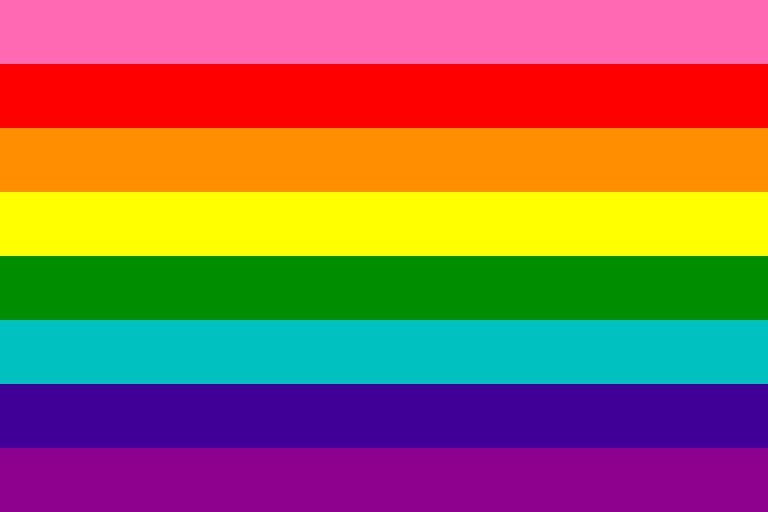
Gilbert Baker Pride Flag
- Hot Pink symbolizes the vibrant spirit of sexuality.
- Red embodies the essence of life itself.
- Orange represents the journey of healing and recovery.
- Yellow signifies the warmth and vitality of sunlight.
- Green symbolizes the harmony and interconnectedness found in nature.
- Turquoise embodies the magic and transformative power of art.
- Indigo stands for serenity and inner peace.
- Violet represents the indomitable spirit and unique contributions of LGBTQ individuals.
LGBT Rainbow Pride Flag (Traditional Pride Flag and 6-Color Pride Flag)
The 6-Color Pride Flag is one of the most well-known and used LGBT flags throughout history. Hot pink wasn´t included in the fabrication of these flags, because the fabric was hard to find. As the demand for the flag started to rise after the assassination of gay San Francisco City Supervisor Harvey Milk on November 27, 1978. In 1979, the flag was modified again. Aiming to decorate the streetlamps along the parade route with hundreds of rainbow banners, Gilbert Baker decided to split the motif in two with an even number of stripes flanking each lamp pole. To achieve this effect, he dropped the turquoise stripe that had been used in the seven-stripe flag. The result was the six-stripe version of the flag that would become the standard for future production.
Red symbolizes life, orange symbolizes healing, yellow symbolizes sunlight, green symbolizes nature, blue symbolizes harmony/peace and violet symbolizes spirit.

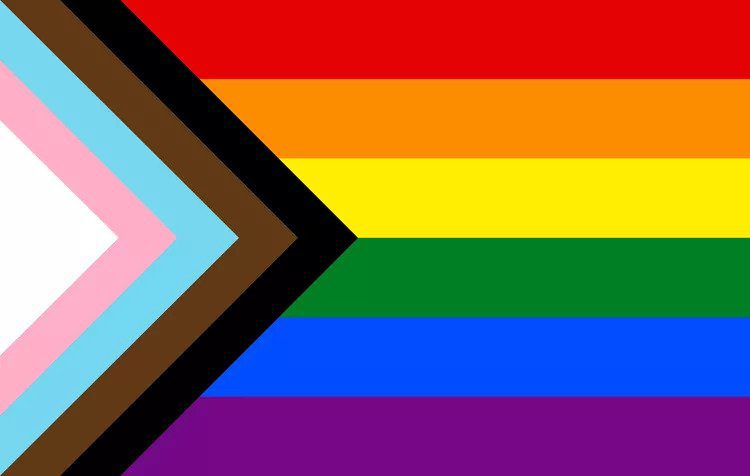
LGBT Progress Pride Flag
The Progress Pride Flag was created by Graphic designer Daniel Quasar in 2018 to represent marginalized LGBTQ+ communities of color and the transgender individuals. The flag is a symbol of inclusion and progression.
- Six-colored Rainbow Flag: symbolizes lesbians, gays, bisexuals and transgenders
- Black and Brown: symbolizes the marginalized LGBTQ+ communities of color
Intersex-inclusive LGBT Progress Pride Flag
The Intersex-Inclusive Progress Pride Flag adds the intersex community to the Progress Pride Flag. With this update coming in 2021, this serves as the most up-to-date LGBTQ+ flag. The flag was created by Valentino Vecchietti of Intersex Equality Rights UK.
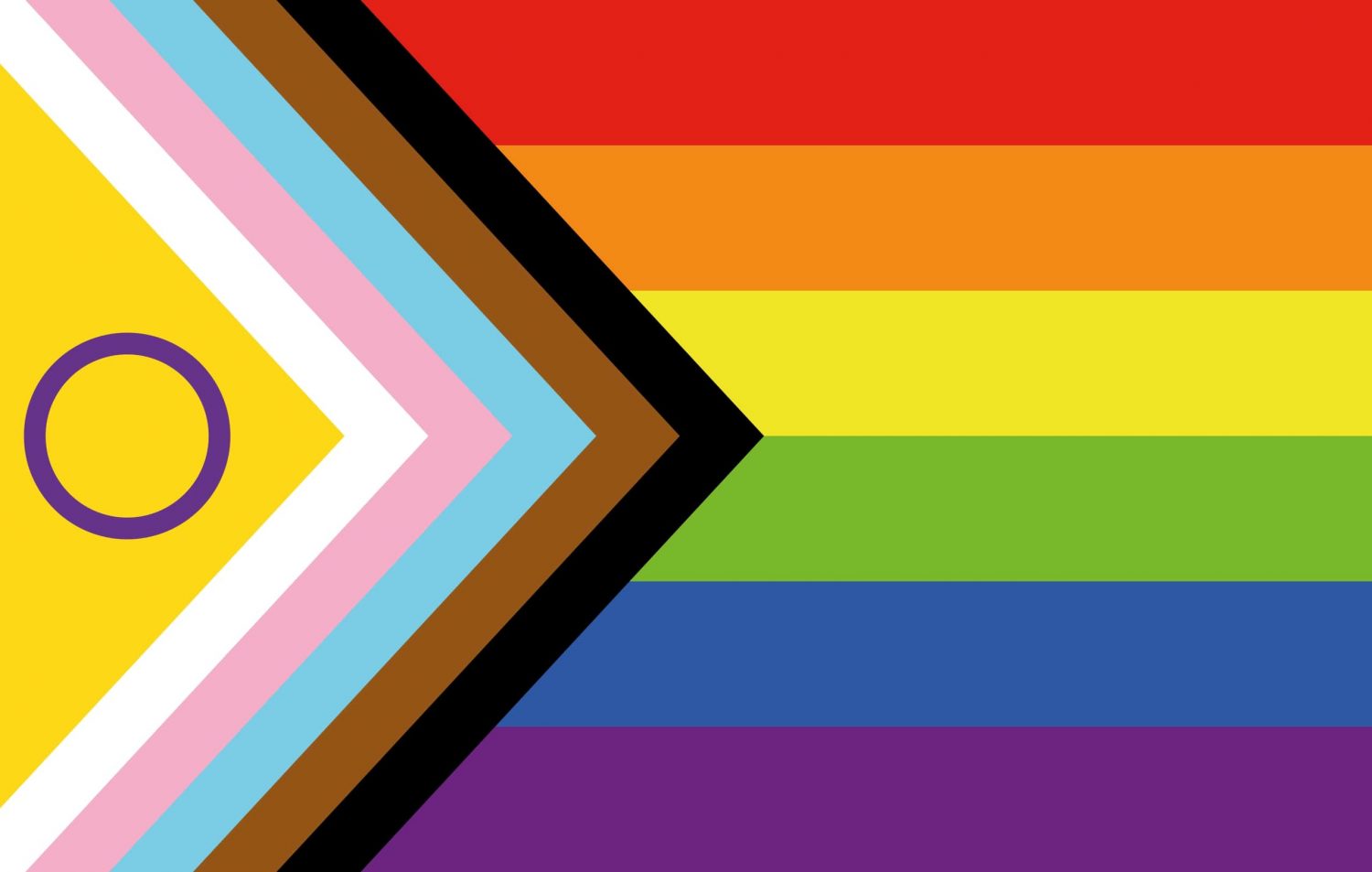

Queer Flag
While this flag is not as well known, this is the Queer Pride Flag. Created in 2015, the flag represents all aspects of queerness as the label ‘queer’ has become more celebrated. The pink and blue shades represented same-gender attraction while the orange and green stripes stand for non-binary and gender non-confirming individuals. The black and white stripes symbolize asexual, aromantic, and the agender community.
Sexual Orientation Flags
Lesbian Pride Flag
The Lesbian Flag is a lesser-known flag that deserves more recognition. It showcases a beautiful combination of various pink shades, occasionally adorned with a red kiss symbolizing lipstick lesbians. Natalie McCray is the creative mind behind this flag, having designed it in 2010.
- Darkest Orange: Signifies gender nonconformity
- Middle Orange: Symbolizes independence
- Lightest Orange: Represents community
- White: Reflects unique relationships to womanhood
- Lightest Pink: Symbolizes serenity and peace
- Middle Pink: Represents love and sex
- Darkest Pink: Signifies femininity


Bisexual Pride Flag
The bisexual flag by Michael Page in 1998 as a symbol of the bisexual community and its allies. The colors represent the sexual orientation of people who identify as bisexual, and also their attraction to both genders.
- Pink: symbolizes attraction to those of the same gender identity
- Purple: symbolizes attraction to two genders
- Blue: symbolizes attraction to those who identify as a different gender
Pansexual Pride Flag
The Pansexual Pride Flag was created by Jasper V. and posted anonymously on Tumblr to represent the sexual identity of pansexual individuals, along with its inclusion in the LGBTQ+ community. This flag is made up of three horizontal stripes in red, yellow, and blue.
- Pink: symbolizes attraction to those who identify as female
- Yellow: symbolizes attraction to those who identify as genderqueer, non-binary, agender, and androgynous
- Blue: symbolizes attraction to those who identify as male
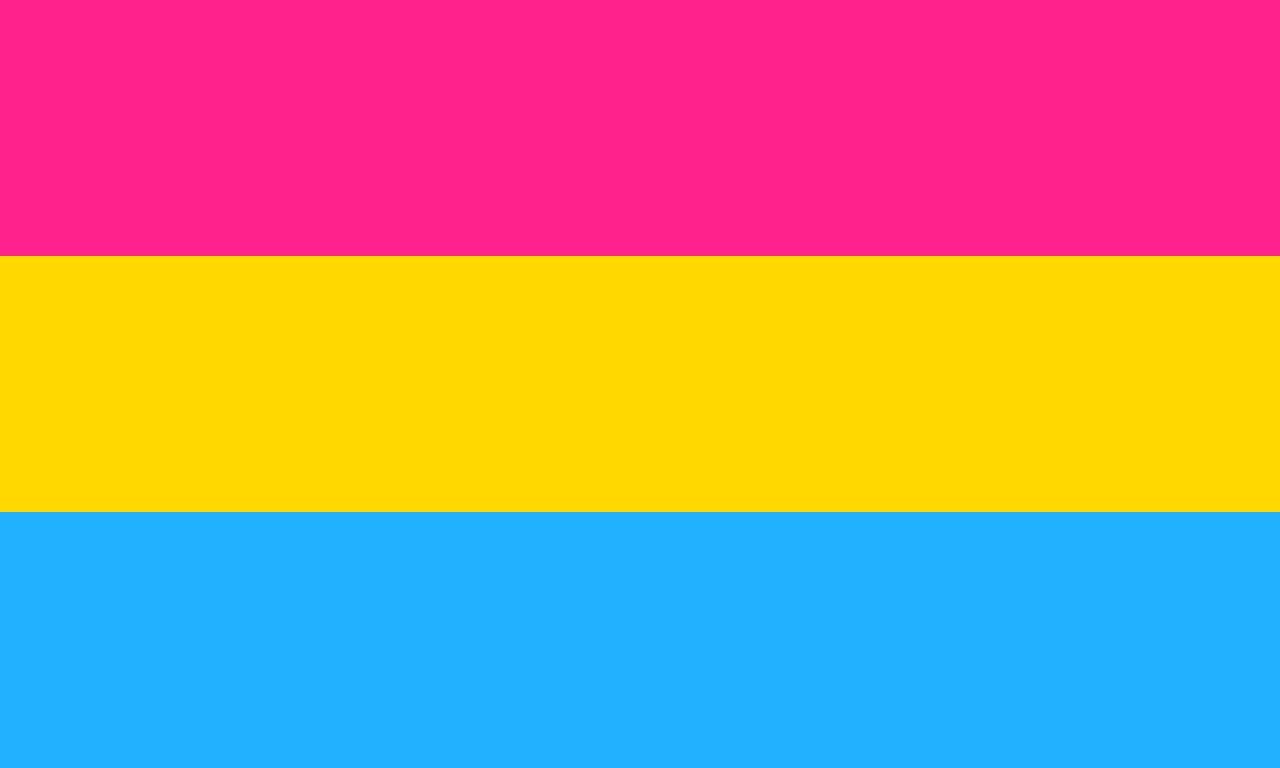
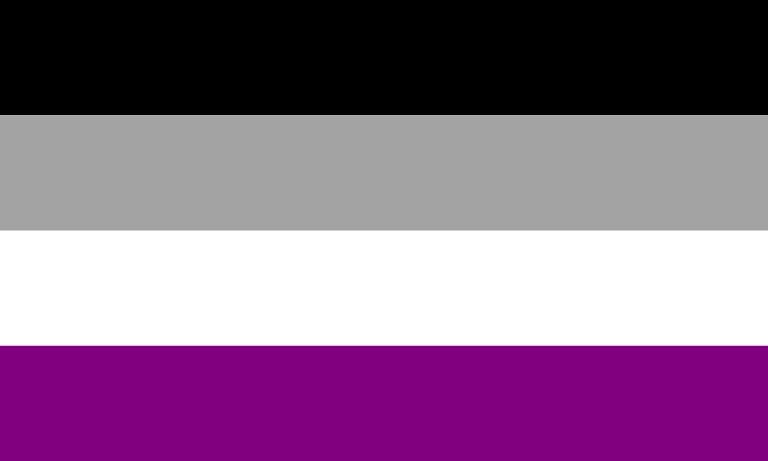
Asexual Pride Flag
The Asexual Pride Flag was designed in 2010 by AVEN members to represent the asexual (or non-sexual) community and their allies. It is often used as a symbol for the asexual community on blogs and forums.
- Black: symbolizes asexuality
- Grey: symbolizes grey-asexuality and demi-sexuality
- White: symbolizes non-asexual partners and allies
- Purple: symbolizes community
Demisexual Pride Flag
The Demisexual Pride Flag is an extension of the LGBT community. It was created to represent alignment with the asexual, demisexual, and sexual communities. Demisexuality is when one does not experience sexual attraction to another person unless they have an emotional connection.
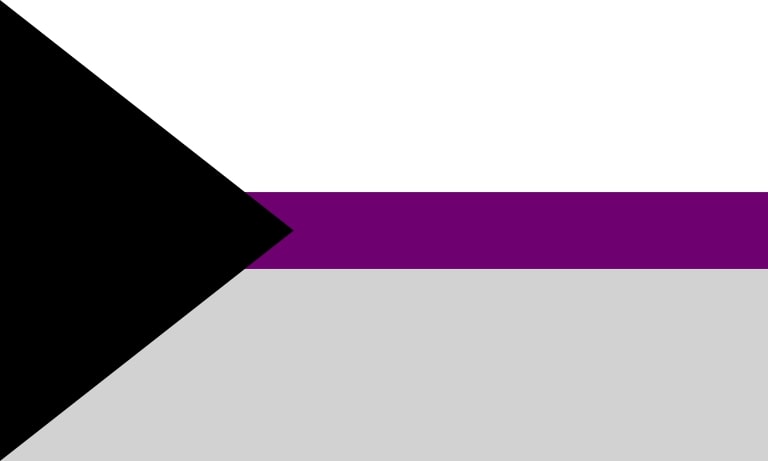
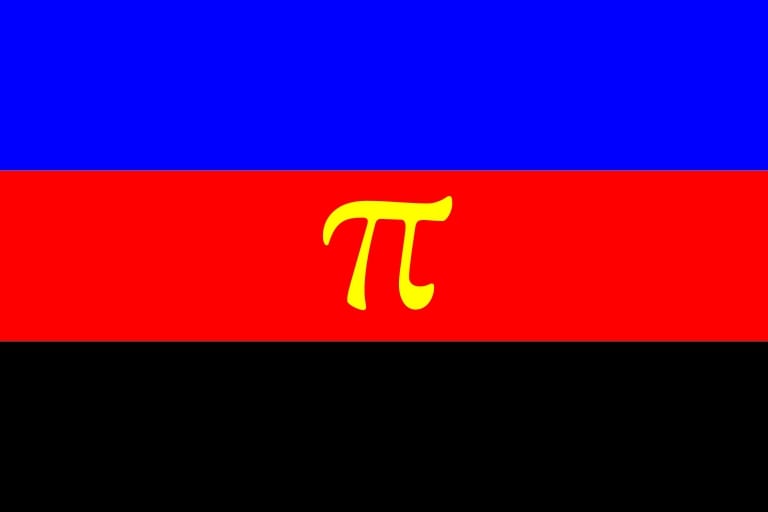
Polyamory Pride Flag
The Polyamory Pride Flag was designed by Jim Evans in 1995 as a symbol for the polyamorous community. Each color in the flag represents a unique facet of polyamory. Blue symbolizes the values of openness and honesty within polyamorous relationships, red represents love and passion, and black signifies solidarity with individuals who feel compelled to conceal their polyamorous partnerships. The prominent Pi sign in the center of the flag represents the endless possibilities for diverse and multiple partnerships within the polyamory community.
Polysexual Pride Flag
Flag was created by a Tumblr user named Samlin in 2012. Samlin designed the flag in response to the lack of representation for polysexual individuals. Feeling a sense of sadness that this group didn’t have a designated flag, Samlin took the initiative to create one. The flag bears a close resemblance to the bisexual and pansexual flags because, according to Samlin’s perspective, these sexual orientations all fall within the broader category of multisexuality.
- Green: symbolizes attraction to non-binary individuals
- Blue: symbolizes attraction to men
- Pink: symbolizes attraction to women


Abrosexual Pride Flag
The flag was created by Mod Chad of “pride flags-for-us” after a request from an anonymous Tumblr user. It is believed to have originated on DeviantArt in 2013 and gained recognition on Tumblr.
The flag consists of five colors: dark green, light green, white, baby pink, and rich pink. The specific reasons for choosing these colors are not widely known. One interpretation suggests that the green represents queer attraction, the fade to white represents the shifting stages of attraction, and the pink symbolizes the actual shift. The colors also resemble a watermelon, possibly referencing the fluidity of the abrosexual orientation.
Omnisexual Pride Flag
Similar to various queer identities, omnisexual individuals have their own LGBTQ+ flag, featuring shades of pink, purple, and blue. The omnisexual pride flag was created by @pastelmemer in 2015, although the specific symbolism behind the colors was not explicitly provided. Nonetheless, many omnisexual individuals have attributed personal interpretations to each color, leading to a semi-consensus regarding their meaning:
- Pink represents attraction to women.
- Blue represents attraction to men.
- Purple represents attraction to non-binary people.
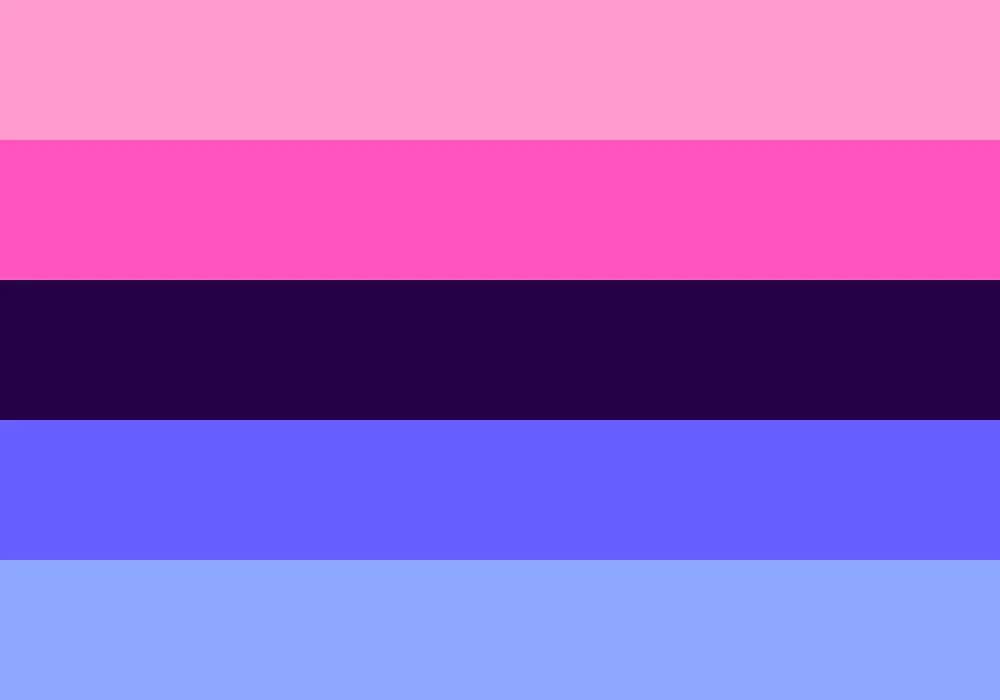
Gender Identity & Gender Expression Flags
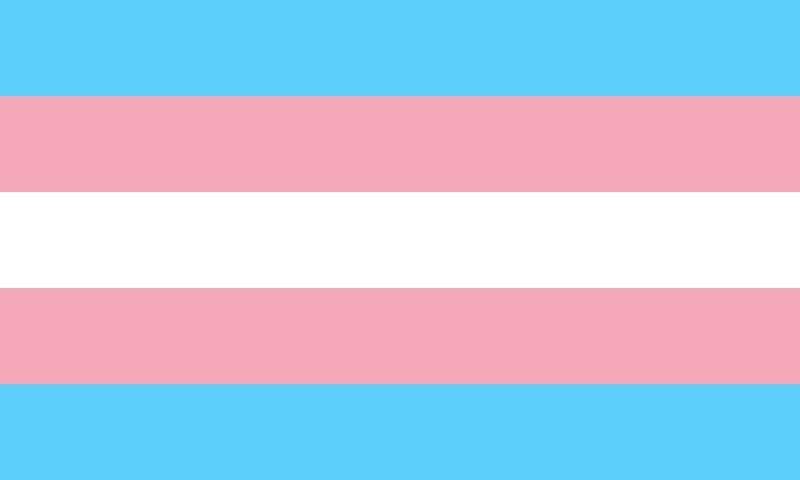
Transgender Pride Flag
The flag was created by American trans woman Monica Helms in 1999 as the transgender community and it was shown at a pride parade in Phoenix, Arizona in 2000.
- Light blue: symbolizes the traditional color for baby boys
- Pink: symbolizes the traditional color for baby girls
- White: symbolizes those who are transitioning or consider themselves having a neutral or undefined gender
Non-Binary Pride Flag
The flag has been created to represent the gender identity of people who identify themselves as neither male or female. The pride flag was designed by a member of the Facebook group “Nonbinary Gender Fluid” and was created with the colors magenta, white, and light purple.
- Yellow: symbolizes those whose gender falls outside of and without reference to the binary
- White: symbolizes people with many or all genders
- Purple: symbolizes those whose gender identify falls somewhere between male/female or is a mix of them
- Black: symbolizes people who feel they are without a gender


Intersex Pride Flag
The flag was created by Morgan Carpenter in 2013 to show solidarity with the intersex community. The intersex pride flag is used to show that there is more than just male or female when it comes to gender identity. It also shows that even within these two categories, there is a spectrum of identities.
- Purple and Yellow: symbolizes gender neutral people
- Circle: symbolizes completeness/wholeness and the intersex people’s personality
Genderfluid Pride Flag
The flag was created by JJ Poole in 2012 for the genderfluid, transgender, non-binary and other people who don’t identify as male or female. It also represents those who are transgender or genderqueer but not exclusively so, those whose gender identity is not static, and those who are intersex. The stripes may be varied in width to represent these ideas.
- Lavender: symbolizes androgyny and people who identify as a mixture of female and male
- White: symbolizes agender people
- Dark Green: symbolizes people who identify outside of and without reference to the gender binary
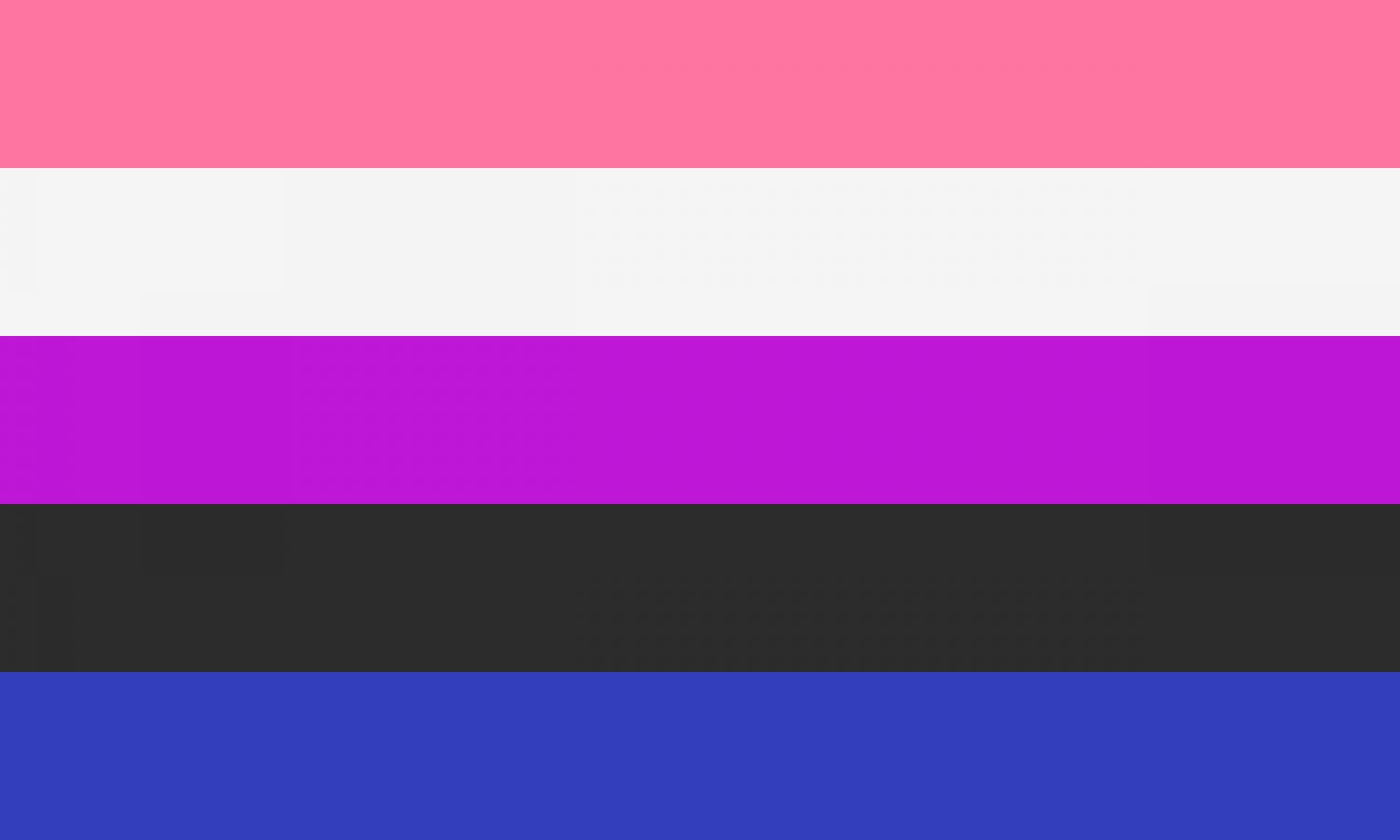
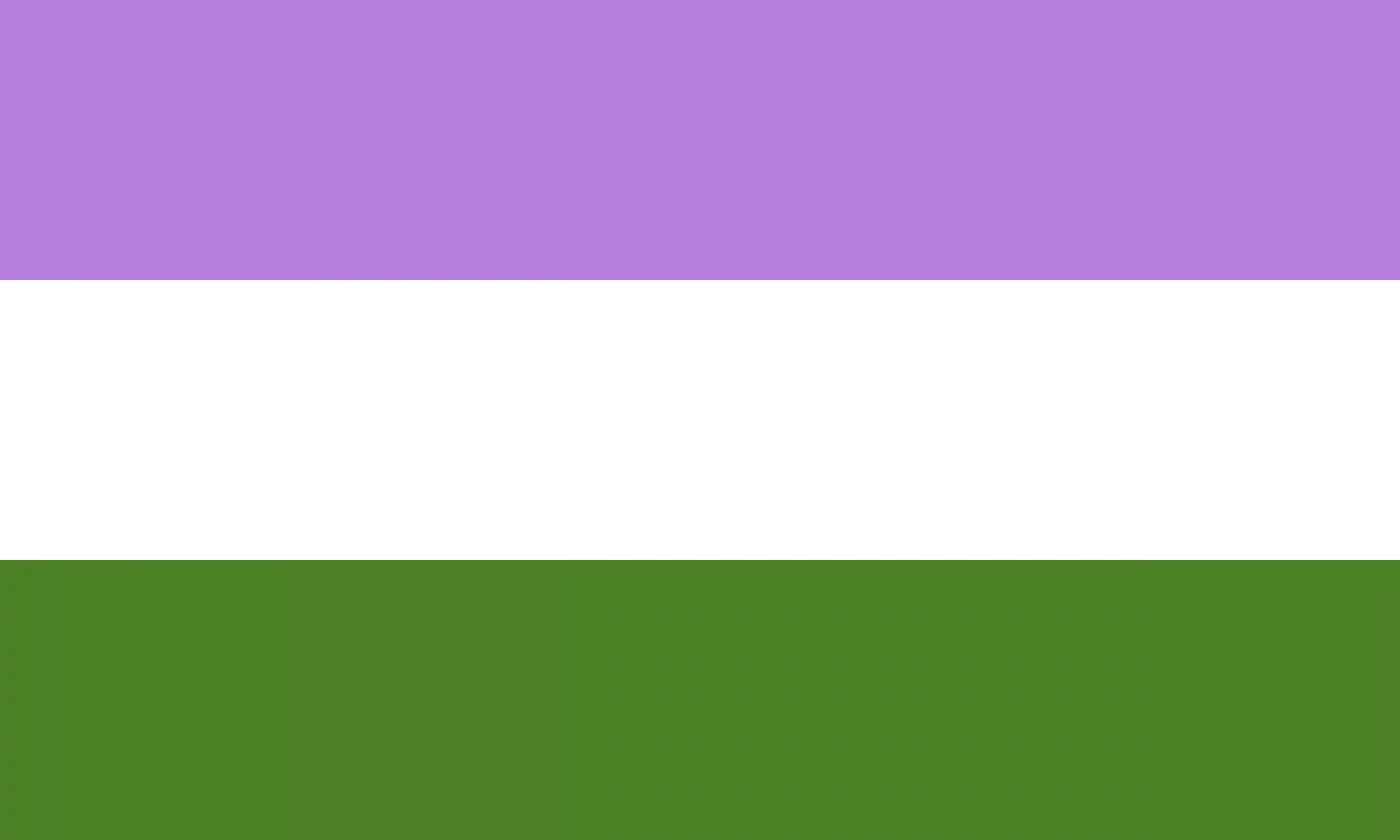
Genderqueer Pride Flag,
The flag crafted by Marilyn Roxie in 2011, was specifically designed to be visible from a distance and to serve as a visually recognizable symbol for genderqueer individuals, who often find themselves as outliers within the LGBT+ community.
- Lavender: This color represents androgyny and individuals who identify as a blend of both male and female genders.
- White: Symbolizing non-binary and gender-questioning individuals, white serves as a representation of the diverse experiences and expressions within the genderqueer community.
- Dark Green: This color is emblematic of those who identify outside of or beyond the gender binary, affirming their unique gender identities without adhering to traditional male or female categorizations.
Agender Pride Flag
The flag designed by Salem X in 2014, represents individuals who identify as non-binary or without a gender. The flag consists of the following colors and their meanings:
- Black symbolizes the absence of gender.
- Gray represents a semi-genderless identity.
- White symbolizes the absence of gender.
- Green signifies non-binary genders.
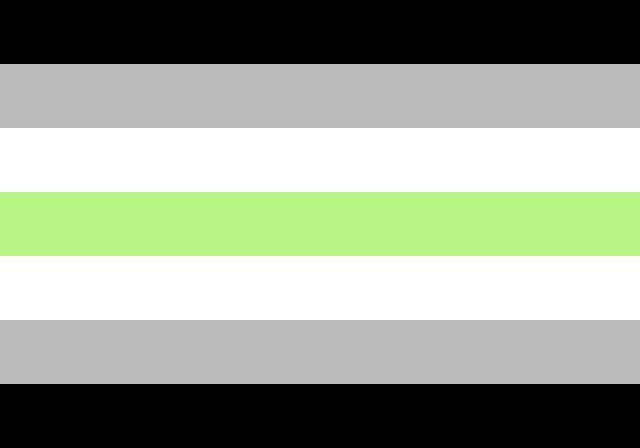
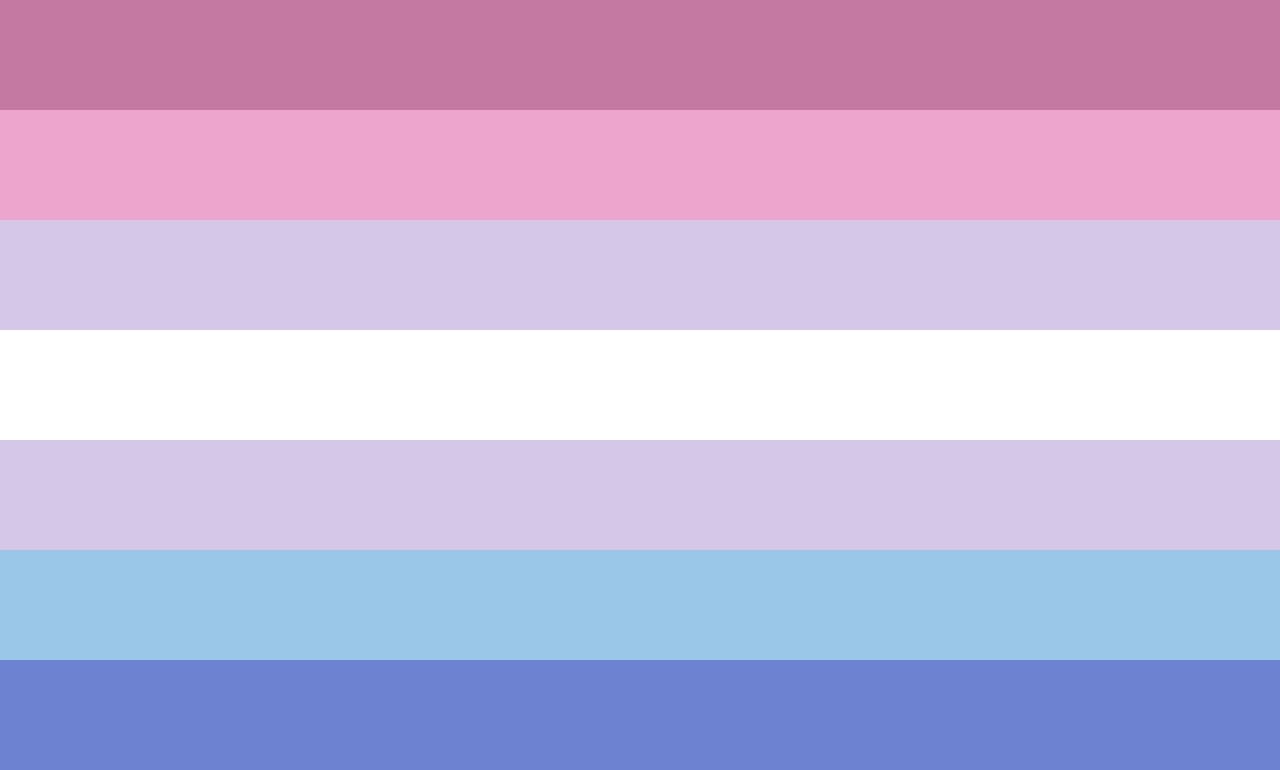
Bigender Pride Flag
The creation of the Bigender Pride Flag is unknown. The flag represents those who have two genders. In some cases, this is both male and female, but it can also include non-binary identities. These two gender identities can occur at the same time or they can vary over time.
Demigender Pride Flag
A demigender is an umbrella term used to describe nonbinary gender identities where individuals experience a partial connection to a specific gender. This term encompasses identities like demiboy and demigirl, as well as various other demigender identities.
Although many demigender individuals prefer to use their specific flags, there is an overarching demigender pride flag that consists of seven stripes: dark grey, light grey, light yellow, white, light yellow, light grey, and dark grey.
The grey stripes on the flag symbolize the partial or fragmentary nature of the gender connection and represent the areas of ambiguity. The yellow stripe represents non-binary gender identities, while the white stripe represents agender identification.


Androgyne Pride Flag
An androgynous individual is someone who embodies a blend of both masculine and feminine qualities, presenting themselves in an ambiguous or balanced form. Androgyny can pertain to biological sex, gender identity, and/or gender expression.
The androgyne flag was created by Tumblr user saveferris on July 24th, 2014. It consists of three vertical stripes, each representing a specific meaning:
- Pink: Symbolizes femininity and womanhood.
- Blue: Represents masculinity and manhood.
- Purple: Signifies androgyny, which encompasses a combination of the two colors, representing the blending of masculine and feminine characteristics.
Demigirl Pride Flag
The flag was created by Tumblr user Transrants in July 2015. While there are no confirmed color meanings, there are common assumptions associated with the flag.
The demigirl pride flag aims to represent gender neutrality, which is a significant aspect of the demigirl experience. It symbolizes the questioning and fluidity of gender.
- Pink: Represents womanhood or femininity.
- White: Symbolizes non-binary or agender identities.
- Grey: Represents the grey areas and partial connections within gender identity, as well as the acknowledgement of the possibility of more genders beyond the traditional binary spectrum.
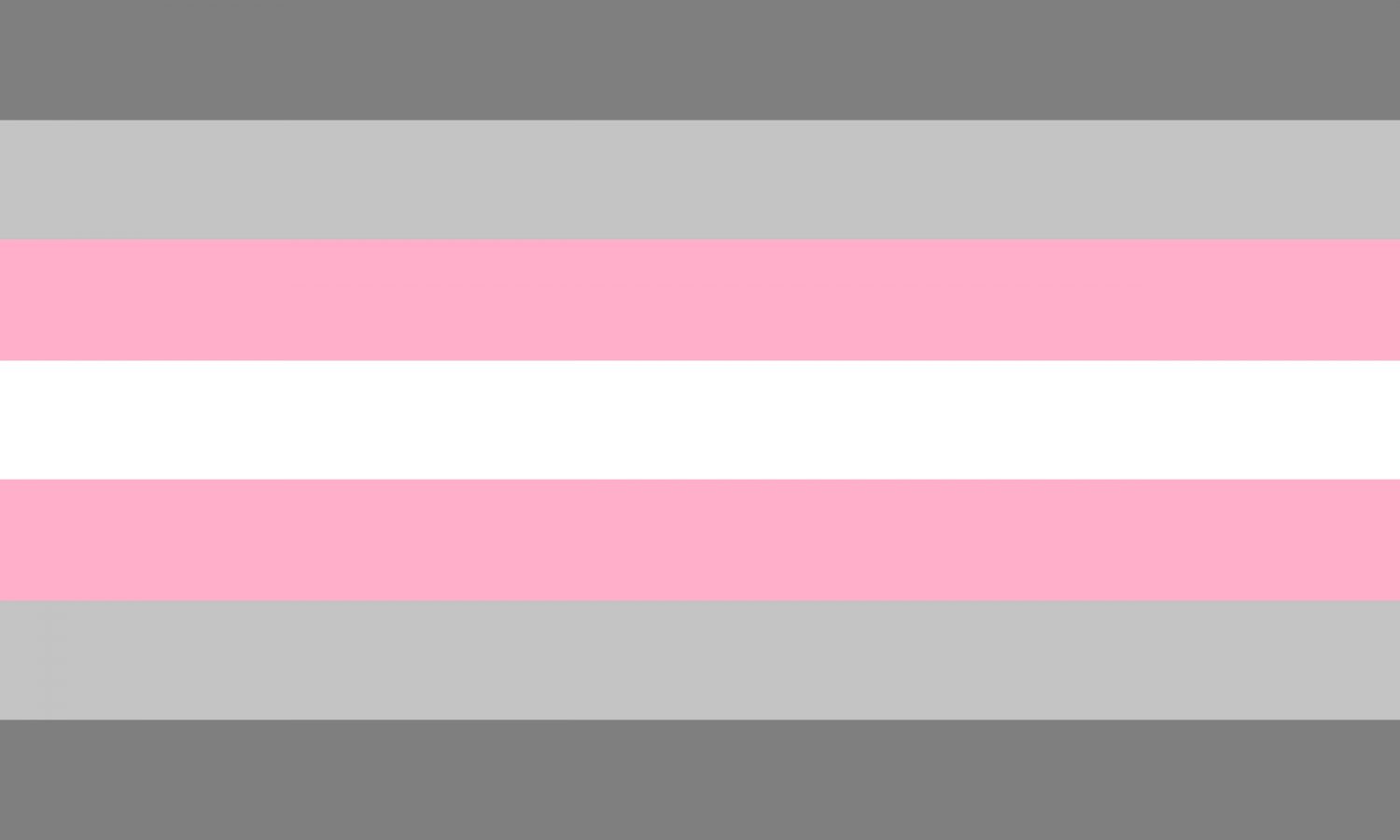

Gay Men’s Pride Flag
Another lesser-known pride flag. It comes in a variety of green, blue, and purple hues.
This modern gay men’s pride flag is a reimagining of a previous gay men’s pride flag with a variety of blue tones. Because it employed colors that were stereotypical of the gender binary, that edition was problematic This new flag includes a broader spectrum of LGBT men, including transgender, intersex, and gender-nonconforming males, among others.
However, it is fair to say that most gay men prefer to simply use an iteration of the rainbow LGBTQ+ flag that is more representative of the entire queer community.
Genderflux Pride Flag
Genderflux is an umbrella term that encompasses gender identities where one’s gender or the intensity of their gender fluctuates over time. Individuals who identify as genderflux experience a varying range of intensity within their gender identity. The creator of the genderflux pride flag remains unknown, and although there are now three new versions, the original flag is the most widely used. It consists of six stripes and six colors. The commonly attributed meanings to these colors are as follows:
- Dark pink: Represents women.
- Light pink: Represents demigirls.
- Grey: Represents agender individuals.
- Light blue: Represents demiboys.
- Dark blue: Represents men.
- Yellow: Represents non-binary genders.
These colors aim to represent and celebrate the diverse gender identities and experiences within the genderflux community.


Gray Sexual Pride Flag
Gray asexuality, also referred to as gray-a or gray-ace, is an identity within the asexual spectrum where individuals experience infrequent or fluctuating levels of sexual attraction. The graysexual flag, devised by Milith Rusignuolo and uploaded to Wikipedia on June 21st, 2013, consists of three horizontal stripes. The purple stripe represents asexuality, the gradient from gray to white represents the variability of attraction, and the final purple stripe signifies the return to asexuality.
Hijra Flag
In India, the hijra is a formalized third gender status. As worshippers of the Mother Goddess Bahuchara Mata, their divine abilities are dependent on their asexuality.
These identities do not have a perfect counterpart in the gender and sexual orientation taxonomy, and they provide a challenge to Western notions of sex and gender. In India, some Hijras describe themselves not by their sexual orientation but by their complete lack of sexuality and tell how sacred powers are created by transforming sexual energy.
A person with the username HijrAnon produced the first known hijra flag in 2016. The symbolism of the flag was described by HijrAnon as follows:
- The pinkish background is meant to be ambiguous, looking like a pink or dark red depending on how you look at it
- The head shape with one-half white and one-half greenish is meant to represent Ardhanarishvara (the white half is Lord Shiva, the green half is Parvati, the light green middle is Ardhanarishvara themselves).
- The yellow ring near their neck is meant to be a necklace. In India, necklaces are usually worn for protection and good luck – so in a way, they wanted this to represent protection for hijras.

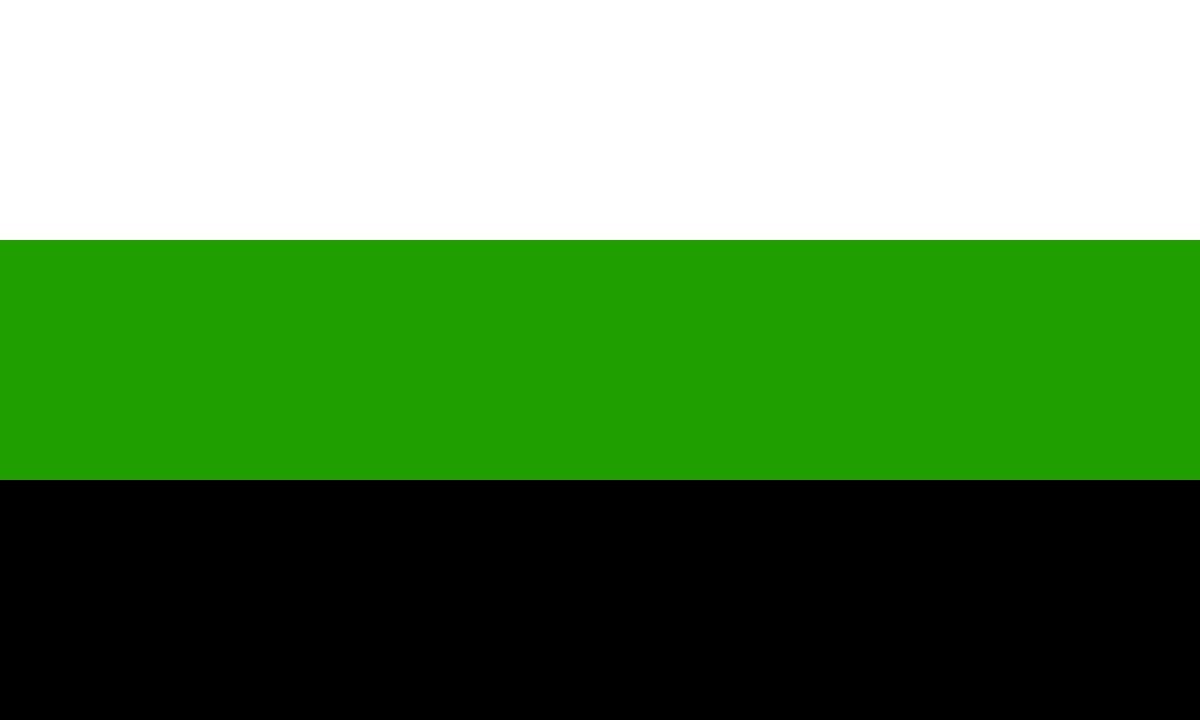
Neutrois Pride Flag
Neutrois is a gender identity associated with gender neutrality or a neutral gender, often interpreted as indifference or absence of gender (agender). While some use agender and neutrois interchangeably, others make a distinction. Neutrois refers to a gender identity that is neutral, neither male nor female, while agender signifies having no gender at all.
The neutrois pride flag consists of the following colors and their meanings: white represents being gender-neutral, unidentified, or undecided; dark chartreuse green symbolizes the absence of femininity or masculinity; and black is associated with being agender or genderless.
Pangender Pride Flag
Pangender individuals are comfortable with various gender labels and their gender identity is not limited to one specific gender, encompassing multiple genders simultaneously. It acknowledges the infinite potential for diverse genders within an individual’s cultural and life experience, including the possibility of unknown genders.
The Pangender Pride flag was initially proposed by Cari Rez Lobo in 2015 on Tumblr. The flag draws inspiration from the agender pride flag and features vibrant colors to symbolize the diversity of genders. Yellow represents genders unrelated to female and male, light red signifies the transition between female and male genders, light violet-pink represents female and male genders, and white represents the unity of all these genders.
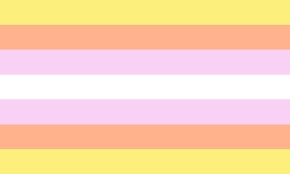
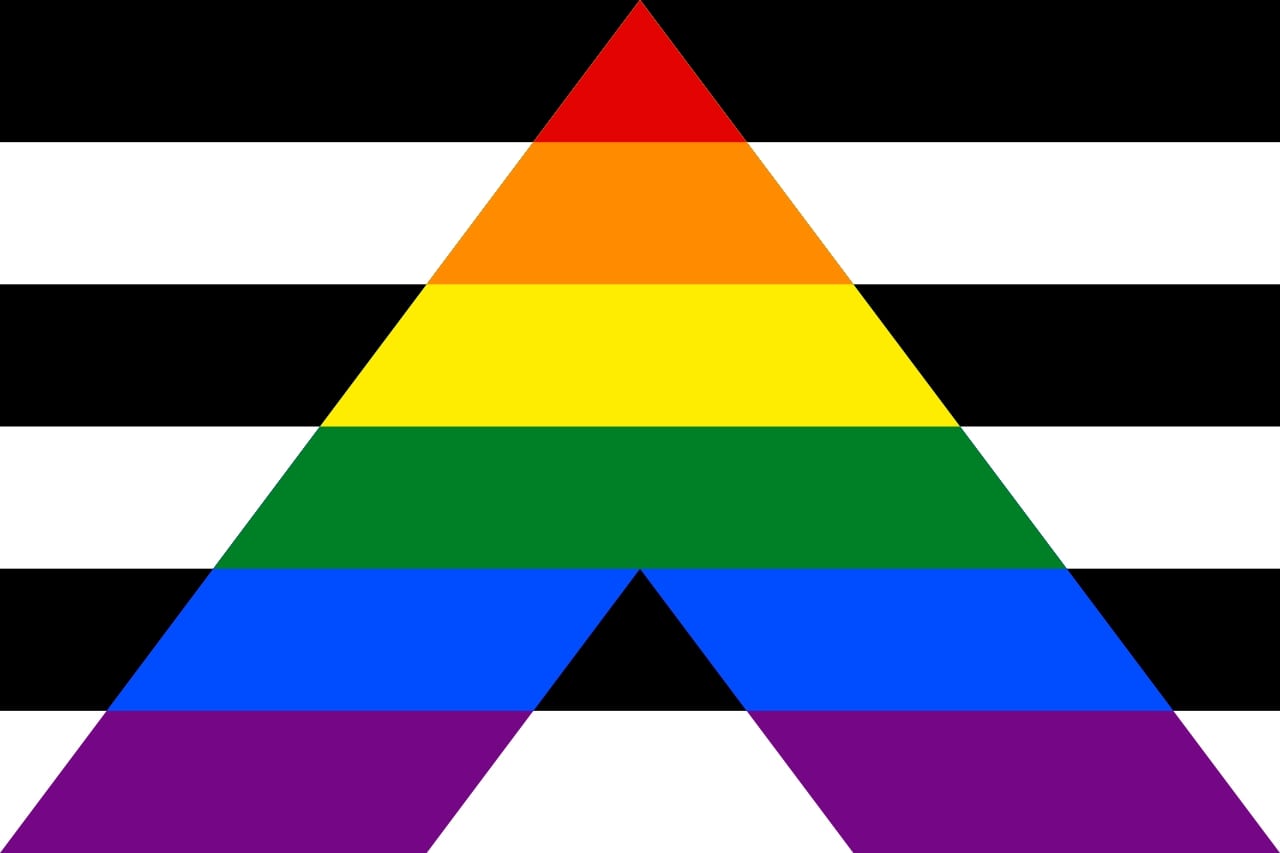
Heterosexual Ally Pride Flag
A heterosexual ally refers to a cisgender or heterosexual person who acknowledges the discrimination faced by the LGBTQ+ community based on their SOGI. While the origin of the flag is unknown, it emerged in the 2000s and combines elements of the LGBTQ+ pride flag and the heterosexual flag.
The flag incorporates the modern six-colored LGBTQ+ pride flag, excluding the pink and turquoise colors from the original flag created by Baker. It represents unity and support for the LGBTQ+ community. The letter ‘A’ in the flag signifies allyship, the black and white stripes represent the straight flag, and the rainbow colors within the ‘A’ represent the LGBTQ+ community.
It’s important to note that displaying the heterosexual ally flag should go beyond mere trend or symbolism. True allyship entails understanding the challenges faced by LGBTQ+ individuals and taking responsibility to actively support and advocate for them. Brandishing the flag is not a requirement for supporting the LGBTQ+ community, as being an ally involves offering support in various meaningful ways.
Trigender Pride Flag
Trigender is a gender identity in which a person switches between or among several genders, including a third gender (genderless, a mix of masculine and feminine, or any other variety of genderqueer identities). Dependent on the individual’s mood or environment, a trigender individual may change from one gender to another.
An unknown person developed the trigender flag, and the first known use was on July 4th, 2015. The trigender pride flag has five stripes and three colors which stand for:
- Pink signifies femininity and female genders
- Blue signifies masculinity and male genders
- Green signifies androgyny and third/other genders
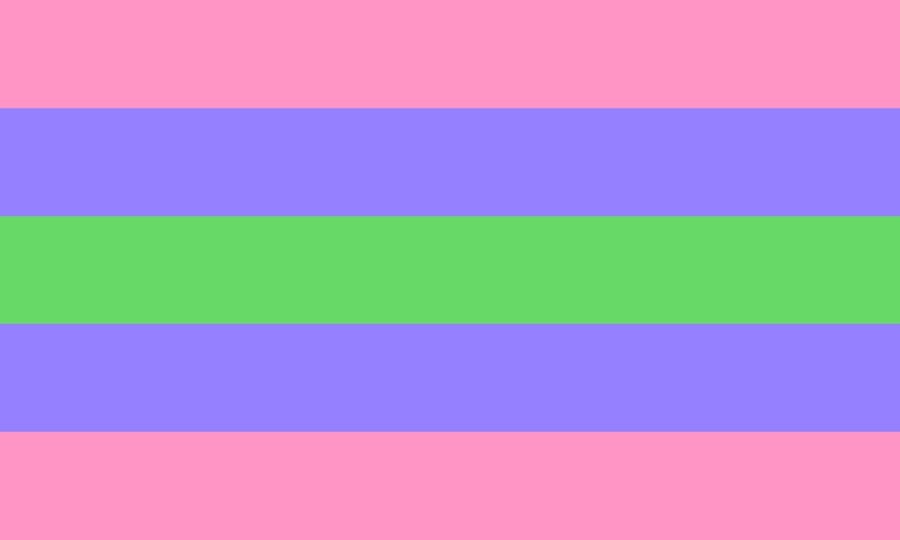
Intersectionality Pride Flags
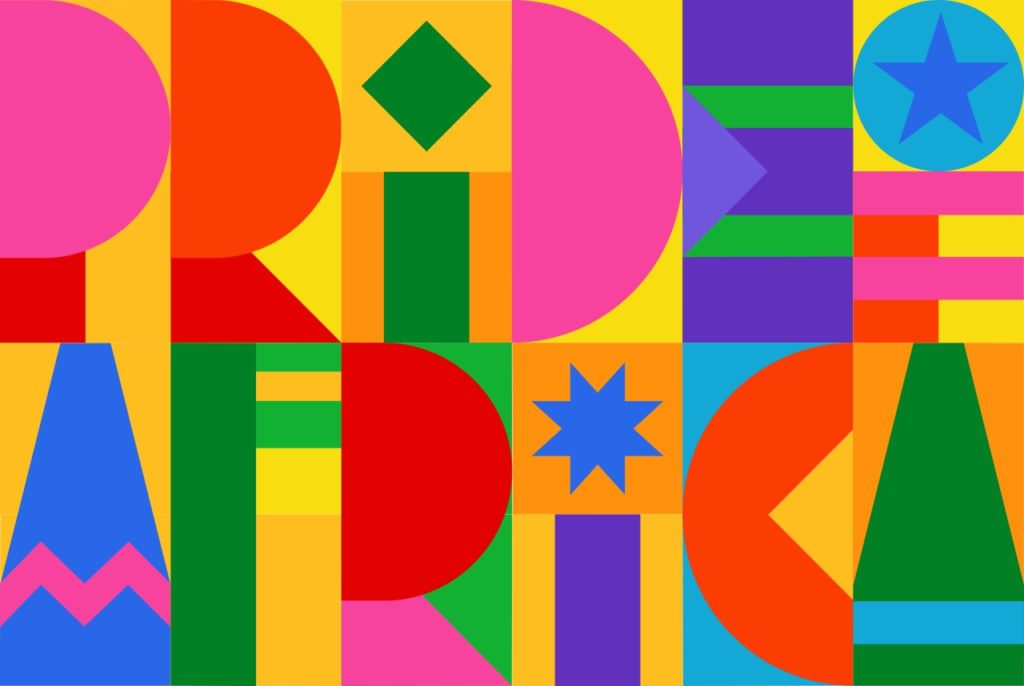
Pride of Africa Flag
The flag made its inaugural appearance at Johannesburg Pride in 2019, marking a significant moment as the first-ever pan-African LGBTQ+ flag. Crafted by the Pride of Africa Foundation, this emblematic flag draws inspiration from the diverse range of national flags that represent the countries across the African continent, symbolizing unity and inclusivity within the LGBTQ+ community throughout Africa.
Queer People of Color Pride Flag
The Queer People of Color Flag appeared at San Francisco Pride in 2019, but rose to prominence in 2020 during the Black Lives Matter Protests. While the designer and original year are unknown, the flag signifies how the struggle for racial equality and queer equality often intersect. It also honors the number of QPOC that have spent their lives fighting for both queer and racial equity.

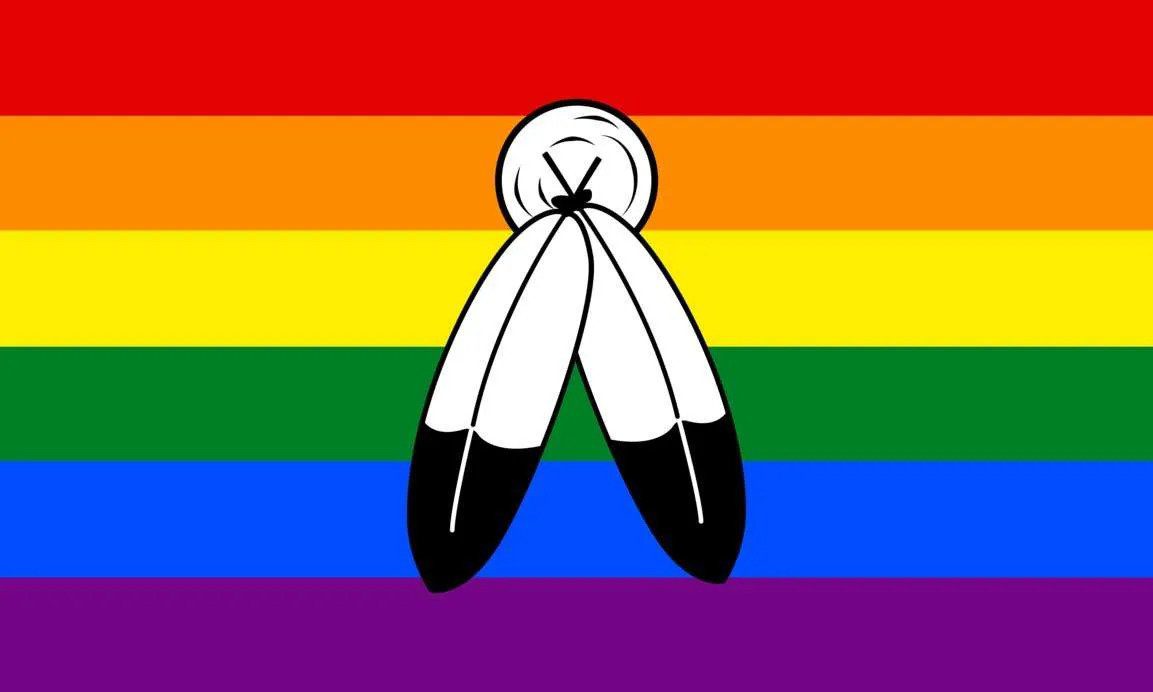
Two-Spirit Pride Flag
The flag was designed to honor and represent indigenous North Americans who embrace traditional third-gender ceremonial and social roles within their cultures. Coined in 1990 at the Indigenous lesbian and gay international gathering in Winnipeg, the term “two-spirit” was introduced as a more respectful and inclusive replacement for the derogatory term “berdache.”
The flag incorporates symbolic elements, including two feathers representing masculine and feminine identities, a circle signifying the unification of these identities, and rainbow colors that represent a modern understanding of diverse gender expressions and sexual orientations within the two-spirit community.
Questioning Pride Flag
Questioning is a process of self-exploration and inquiry to understand one’s gender, sexual orientation, romantic orientation, or any aspect of personal identity. It involves investigation, education, and exploration to gain clarity and understanding.
Various questioning pride flags exist, often featuring a question mark as a central element in their design. One notable version, created by Swocks, the owner of a prominent LGBTQ+ Hangout community, emerged on August 18th, 2020, and has become widely recognized. This particular flag depicts a pastel background with a prominent white question mark, symbolizing the journey of questioning and representing the pride associated with embracing and exploring one’s identity.

#DiverCityNGO #ԲազմազանությունՀԿ #Diversity #Բազմազանություն #LGBT #HumanRights #LGBTRights #DCNGO #DCYouth #YouthVoice #DCRights #Gay #Lesbian #Bisexual #Trans #Queer #LGBTPeople #PrideFlag #LGBTflags #PrideLGBT #PrideMonth
![]()



